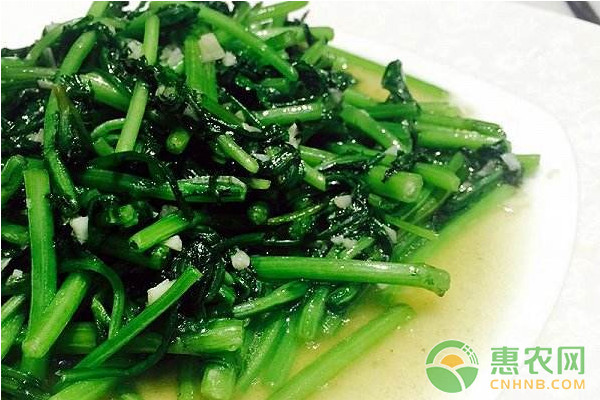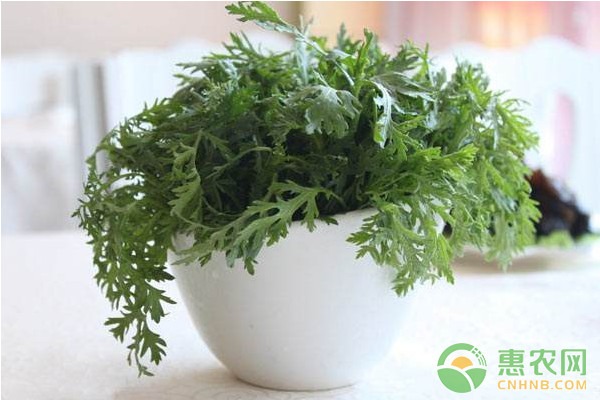How is Artemisia sinensis? In recent years, Artemisia selengensis has become an indispensable side dish on the hot pot table. Many farmers' friends have also aimed at this business opportunity to start planting a large area of ​​Artemisia scoparia. Let's learn together!

1. Variety selection:
Artemisia selengensis can be divided into two major types, large leaf type and small leaf type, depending on the size of the leaves and the depth of the nick. The main fine varieties are: Shanghai Artemisia scoparia, Artemisia stalk, Artemisia scoparia, and Artemisia scoparia.
2. Cultivation season and cultivation methods:
Artemisia selengensis is a cool leafy vegetable that is not resistant to high temperatures and is usually cultivated in spring and autumn. In the spring and autumn, open field cultivation can be carried out. Winter and early spring cultivation must be carried out in plastic small arch sheds, greenhouses or solar greenhouses. Planting in spring is mostly in March-April; cultivation in autumn is in August-September, sowing in stages, or in early October.
3, the mouth of the arrangement:
Artemisia scoparia can be produced on an annual basis, so it is important to arrange a gargle. Generally, autumn sowing is the most ideal for pre-made beans, followed by precocious solanes and melons. In the spring, spinach and celery are used as the predecessor, and then melons and legumes are grown. It can be cultivated by intercropping, such as spring sheds and stalks of Solanum lycopersicum; autumn greenhouse cucumbers; sage; tomato, melon, green garlic, sage, and high-efficiency planting; potato, melon, waxy corn, Chinese cabbage, sage, intercropping; Loofah, tomato, Chinese cabbage, efficient planting mode cultivation, etc.
4, seed treatment:
Soaking seeds and germination should be carried out before sowing. The method is to soak the seeds with warm water of about 30 degrees for 24 hours, remove the seeds with water, remove the debris and floating seeds, dry the surface moisture of the seeds, and germination at a temperature of 15-20 degrees. The seeds are inspected daily during germination and washed once with water to prevent the seeds from becoming moldy. Seeds can be sown when the seeds are 60%-70% "white".
5. Soil preparation and fertilization:
Artemisia scoparia has less stringent requirements on soil, but it is better to retain water and fertilizer, well irrigation and drainage, loose soil loam or sandy loam, and the pH value of soil is 5.5-6.8. Although Artemisia selengensis is a fast-growing vegetable, it still needs more nutrient supply. Generally, the base fertilizer is applied with 5 squares of decomposed manure, 35 kg of NPK compound fertilizer, and then flattened for sputum, generally 1-1.5 m wide.

6, sowing:
Artemisia selengensis mainly has two methods of sowing and sowing. Spring and autumn open field cultivation can be carried out by sowing (also available as strip) before sowing. After the water seeps, it will spread evenly. After sowing, cover the soil about 1.5 cm. In the protected area cultivation, the striping is generally carried out, that is, shallow trenches of 1-1.5 cm depth are opened, and the row spacing is 8-10 cm. Seeds are sprinkled in the ditch, and water is covered after covering the soil.
7. Field management:
(1) Watering:
After sowing, keep the ground moist to facilitate the emergence of seedlings. When the seedling height is 3 cm, pour large water, pour 2-3 times of water during the whole growth period, and prevent the humidity from being too high.
(2) Topdressing:
The vigorous growth season is mainly based on quick-acting water-soluble fertilizer. Combined with watering, the profit per mus of Shijiamei or the internal potassium is 10-12 kg. After each harvest, it should be chased once, each time with suitable fertilizer, Apply thin fertilizer as well. However, the next harvest should have a interval of 7-10 days from the last fertilization to ensure product quality.
(3) Pest control:
The main diseases of Artemisia selengensis include rickets, leaf blight, downy mildew, anthracnose, viral diseases, etc. The pests include aphids, whitefly, cabbage caterpillar, diamondback moth, and night moth. In the prevention and control of pests and diseases, we must adhere to the principle of “prevention first, comprehensive prevention and controlâ€, and achieve the principle of combining agricultural control, biological control, and physical and mechanical control to achieve pollution-free control.
8, harvest:
It can be divided into one-time harvesting and two-stage harvesting. The one-time harvesting is 40-50 days after sowing, and the seedling height is about 20 cm when it is harvested on the ground. There are two methods for collecting in stages: one is to collect the land, and the other is to keep 1-2 side branches and cut them, and cut them again every 20-30 days to extend the supply period.
About the cultivation technology of Artemisia selengensis, we will talk about this today. If you feel that it is not bad, you can continue to pay attention to our Hui Nong network!
GMP ATS Injection, Tetanus Antitoxin, Tetanus Toxoid ,Tetanus Antitoxin Injection, Antitetanus, Refined Tetanus Antitoxinsupplier in China
Tetanus Antitoxin,Tetanus Toxoid,Tetanus Antitoxin Injection,Antitetanus&Refined Tetanus Antitoxin
FOSHAN PHARMA CO., LTD. , https://www.full-pharma.com